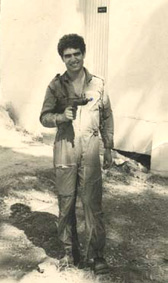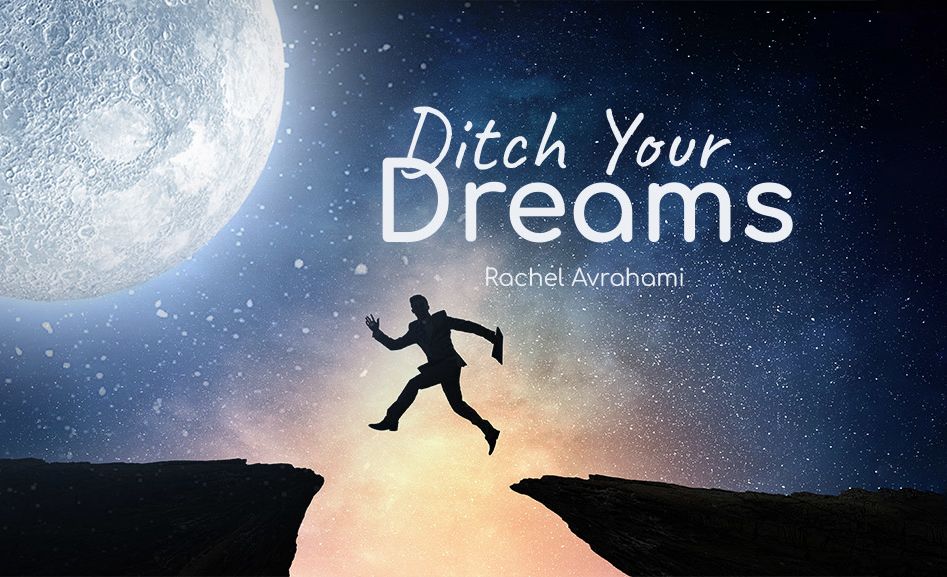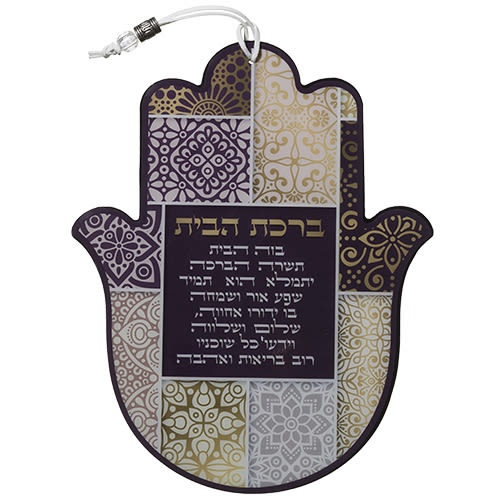Photos by Nachman Weiss
A long line of young men, students at the “Chut Shell Chesed” Yeshiva on Shmuel Hanavi Street in Jerusalem, are waiting in line to enter the awe-inspiring office of their Rosh Yeshiva, Rabbi Shalom Arush shlit’a. Many are sitting in the anteroom and learning while awaiting their turn. We also await our turn, and meanwhile recite the Tikkun Haklali. After touring the Yeshiva’s premises, we begin to realize the magnitude of the spiritual revolution that Rabbi Arush has catalyzed during the previous decade. Hundreds of married Baal Teshuvas, or spiritually awakened Jews, sit here day and night learning Torah. As opposed to the image that has been associated with many Breslever baal teshuvas, Rabbi Arush’s pupils are very serious about Torah, excelling both in the fields of Talmudic learning and in the study of Halacha, or rabbinical law. In fact, several of the most outstanding students have already attained full rabbinic ordination.
We came to the Yeshiva to uncover the secret of Rabbi Arush’s success. We wanted to know how a Baal Teshuva from Petach Tikva in the 1970’s became one of Judaism’s prime spiritual leaders with thousands of followers. Rabbi Arush ten books (so far) are globally well-known and currently appear in six different languages. The Garden of Emuna alone has already sold over 600,000 copies. Rabbi Arush’s CD lessons have topped the 3-million mark. His students devote considerable time to spreading their rabbi’s teachings around the world.
Our turn comes and we enter the rabbi’s office. An aura of awe overcomes us. The rabbi is absorbed in Likutei Moharan, but when he sees us enter, he picks his head up and smiles. The smile is like a sunrise. His eyes glow with emuna. His loving glance makes you feel warm inside. He doesn’t stand on formalities. The smile is facial, but the feeling it projects comes from deep down in the heart…

The smile is facial, but the feeling it projects comes from deep down in the heart…
A bronze plaque on the wall – lovingly and humorously prepared by his students – says, “Ministry of Smiles – Office of the Minister.” That’s Rabbi Arush in a nutshell. With one smile, he teaches what a life of Torah, chassidut, and emuna really means.
There’s no one in Israel who’s unfamiliar with the Chut shel Chesed Yeshiva. It’s a spearhead in Israel’s Teshuva movement. Yet, few know much about its amazing head, Rabbi Arush. It took months of convincing him that such an interview would be a sanctification of Hashem’s name before he so humbly agreed to such personal public exposure. We learned details that even his closest pupils didn’t know.
Aliyah
Young Shalom was twelve years old when his parents, his fellow siblings and he left their centuries-old family home in Morocco and came to Israel. “My parents were very righteous Jews. We came from the town of Bnei Mallal in Morocco, a place of Torah scholars and righteous people, including Rabbi Machlouf Abu-Chatzera. We grew up in a home deeply rooted in the service of God. I remember everything about Morocco, for I lived there almost until my Bar Mitzva. I learned in the Jewish “Alliance” school and in the evening I learned Hebrew. During summers, I’d visit family in Casablanca. We’d visit the graves of tzadikim. I still remember the annual Mimouna festivals, when we’d visit the grave of Rabbi Shlomo Amar of saintly and blessed memory. His grave site was on a hill, and all the Jews of the city would go there. Afterwards, my cousins and I would go to the beach in Casablanca. The notion of simple and innocent faith is very strong amongst Moroccan Jews; even the secular Jews would respect Torah scholars and visit the graves of tzaddikim. You see this today – it’s easy to bring a secular Moroccan Jew home to his roots.”
The Arush family continued to be observant after their arrival in Israel, but the cruel reality of the prevailing secular atmosphere took its toll. “We arrived in Petach Tikva. My parents couldn’t find a proper Torah school for me, so with no choice, they enrolled me in a national religious school. There, boys and girls learned together, and that’s the beginning of the spiritual downfall to show you just how true our sage’s words are. By high school, I was in a completely secular school. My father would shed tears that his children strayed away from the traditional path. My mother would console him and say, ‘These are our children; Hashem shall guard them and we should pray that they do teshuva.’ Only later, when I began to become religious and I asked my father for tefillin, he told me that he’d cry every day that one of his sons should be a God-fearing Torah scholar. He didn’t pray with words – he used tears. It hurt him to know that we were at the beach instead of at the Shabbat table. Mama wouldn’t let him reprimand us – only pray for us. So, my father suffered quietly and we went our merry way. My oldest brother who was a teacher, already married, and who made aliya before us remained religious. But the other eight of us became completely secular.”
“Today, I understand my father’s tears. At 13, I was a tzaddik. I’d pray fervently. But, my observance went down the drain in national-religious junior high and in secular high school. In 1970, I was inducted into the IDF, and I became an airborne medic in the crack Air-Force pilot rescue squad that was known as Unit 386, later to become the renowned Unit 669 as it’s known today.”
 Photo, left: Rabbi Shalom Arush during military service
Photo, left: Rabbi Shalom Arush during military service
The military was the last nail in the coffin of young Shalom’s Jewish observance. “I’d eat chametz on Passover, and anything that came into my mouth, Heaven forbid. The only thing I wouldn’t do is smoke a cigarette on Shabbat. Other than that, I was completely secular.” Speaking about that period in his life was ostensibly difficult for Rabbi Arush, so he pauses, sips a cup of water, and then continues with his story.
There’s so much to tell: As an airborne pilot-rescue medic that would make helicopter sorties deep into enemy territory, Rabbi Shalom Arush participated in dozens of hair-raising missions that include the Yom Kippur War in 1973. Several times, he was the medic with the chopper crew that flew former Defense Minister Moshe Dayan. He learned how to perform emergency field surgery by practicing on dead bodies in the Institute of Forensic Pathology in Abu Kabir near Yafo. “We practiced on cadavers. I had become used to handling dead bodies anyway in so many gruesome wartime situations.”
Serious-minded, newly discharged Shalom turned to university studies with career in mind. “I had a dream of learning medicine, but my grades in humanities were low. My perfect grades in math and sciences weren’t enough to get me into medical school in Israel, but I could’ve been accepted to med school in Canada. An injury on reserve duty was Hashem’s way of stopping me from going to Canada, so I began studying economics and accounting in Tel Aviv University.”
Conversations with Hashem
Rav Arush finished his first year in university with success. But, things began changing in his life. “First, five of my best friends were killed in a tragic helicopter crash on Mount Hermon in 1973. I received a telegram at the dorm informing me of their funerals. I was doing great in university, and didn’t give too much thought about the significance of those funerals. I had a car, long curly hair, and jeans – into my own life. I decided to go to the funerals, more to meet up with my buddies from the army than anything else.”

Rabbi Arush as a student in the University of Tel Aviv
“In respect to the deceased, there was an intermission between each funeral so we could attend them all. But, during one of the intermissions, my buddies and I went to a restaurant in Yafo. We didn’t discuss the deceased, only our own lives and having a good time. I loved art back then, so we also went to an exhibition of surrealistic paintings in Tel Aviv. Only later, when they were all over, did I start pondering about the five funerals. I felt deep remorse – these were my brothers in arms, we served together. My thoughts turned serious, about death and about the meaning of life. I had so much exposure to death, from cadavers to combat fatalities. I handled plenty of dead bodies with my own two hands. But now, in reference to the death of my five closest friends, things were different. Why the rat race when we’re all going to die anyway? What’s it all for? So what if I become a millionaire? I’m going to die anyway…”
“I’m sure that my father’s tears paid off. I started looking for answers. I’d ask Hashem to give them to me. That’s when I began to talk to Him. I’d say, ‘Creator of the World, I want to believe in you but I can’t see you in the corporal sense. Please show me that You are truly Master of the World.’ I asked Hashem to perform miracles for me, and He did! My brother David had become somewhat estranged with my mother; I asked Hashem to instill in my brother’s brain a desire to visit Mama. He did! I asked Hashem to help me on my finals in Economics 101, where 60% fail. I got a grade of 97. I began feeling that Hashem hears me.”
“I didn’t yet call my words prayers, but I began requesting all kinds of things. I’d thank Hashem for my food after eating and I’d ask Hashem to wake me up at a certain time in the morning. He did – right on the requested minute. I’d thank Him for another day alive. Like Abraham our forefather, I began observing the Torah before I knew what was written in it – these things came to me naturally, from an inner desire. Even though I wasn’t formally observant, I was speaking to Hashem all the time. I finally asked Hashem for a book that would answer my questions about life’s riddles, or that would lead me to someone with the right explanations.
 Photo, left: Rabbi Arush in his youth, as a new Baal Teshuva
Photo, left: Rabbi Arush in his youth, as a new Baal Teshuva
“I met a Canadian who had a book entitled Likutei Moharan by Rebbe Nachman of Breslev. He had a meditation group at his house to which he invited me. I came, mostly to see that book, for it had attracted my attention. I opened it directly on the page where Rebbe Nachman talks about the virtues of personal prayer. It spoke about talking to Hashem just like you’d talk to your best friend. That book became my first rabbi – it really spoke to my heart. But, even though I was speaking on a regular basis to Hashem, I hadn’t yet understood what it really means to be a Jew.”
Into the Orchard
“A lot happened until I reached Breslev. I heard about Rabbi Mann in Givat Shaul who’d accept me just as I was – with jeans, with or without a kippa – and that’s just what he did. He answered my questions and received me with open arms. At Rabbi Ginsburg’s house, I met a wonderful baal teshuva named Moshe Shvili.”
“Once I was walking down the street near the Hevron Yeshiva in Geula, and I was suddenly overcome with shame that I wasn’t observing the mitzvot because I hadn’t fully understood them. I scolded myself for being a wise-guy, and I grabbed an abridged Code of Jewish Law which never left my hands. I’d ask my questions to Rabbi Yaakov Mutzafi, with whom I’d pray in the afternoons. I cut my long hair and left my payot (sidecurls). I became totally committed. Soon, I was offered a shidduch (marital proposal), a young lady who ultimately became my wife. We got married and moved to Moshav Chazon Yechezkel.”
“My first Yeshiva was in the Tzofioff synagogue, where I’d give a weekly lesson that was open to the public. I had 15 pupils. A year later, someone donated the use of a building in Musrarra. I opened up a branch of the Yeshiva in the Katamon neighborhood of Jerusalem. By then, I had 80 pupils so we moved to our old building on Shmuel HaNavi Street.”

Hundreds of married students pursue their Torah studies in the Chut Shel Chesed Torah Institutions
For even more of Rabbi Arush’s incredible story and how he found emuna, click here.
Outreach, the Right Way
Rabbi Arush, you’ve come a long way in life. What’s the ultimate goal of all your activities in Chut Shel Chesed?
“I strive for the day when all mankind calls Hashem’s name, that everyone knows there’s a Creator to the world. I even have non-Jewish pupils who have reached me by way of the internet. Half of our web readers aren’t Jewish, and they come from all over the world.”
Rebbe Nachman is quoted in one of his books as saying, “When Mashiach comes, the whole world will be Breslever Chassidim.” Do you see this materializing?
“This is one of the prophecies that really boosted my emuna. When Rebbe Nachman was alive, there were only a handful of Breslever Chassidim. Yet, Rebbe Nachman said that the day would come when the whole world would long for him. This is happening before our very eyes.”
How do you explain that such a diversification of people and cultures are finding meaning in their lives through Rebbe Nachman’s teachings?
“The true version of all the fake and fad meditation and pop spirituality is the simple and beautiful Breslever form of personal prayer in solitude known as hitbodedut. It’s so special, and it’s a way for every human to discover his or her own inner self and special task in the world. Hitbodedut is the path whereby we attain self-realization, as I discussed at length in The Garden of Emuna. Just yesterday, one of my students met a man that was reading The Garden of Emuna in English. The man told him that my book saved him from suicide. We have hundreds of stories like that – really inspiring and moving things that happened to people from reading our books.”
How do you reach the secular world?
“With love – only love. We don’t preach or reprimand, only reflect the joy and warmth of Judaism. At our Yeshiva, it’s the smile that counts. The smile is the secret of our outreach.
Many different types call themselves Breslevers, but they seem to have gone off in tangents. How do you deal with this, and how do you keep your baal teshuva pupils on the solid Torah and prayer-oriented foundation of Breslev?
Our prime emphasis is not merely Torah, but intense and concentrated learning of Torah. The true way of Breslev is total immersion in Torah and uncompromising observance of every iota of the Code of Jewish Law. The main challenge for new BTs is fending off depression and sadness. We therefore place a big emphasis on joy. A joyful person’s mind functions so much better. That’s where emuna comes in: emuna is the key to joy, to Torah, and to personal growth and strength.”
* * *
We leave Rabbi Arush’s office, and by now, the line of young men waiting to see him is even longer that it was before. A young man with a big bushy head of hair and a brand new kippa awaits his turn. He’s holding a Likutei Moharan. Who knows what spiritual revolution is taking place within him? Pretty soon, he’ll probably swap the big bush for a white kippa and long sidecurls.
(Article courtesy of “Sha’a Tova” magazine)



 Photo, left: Rabbi Shalom Arush during military service
Photo, left: Rabbi Shalom Arush during military service
 Photo, left: Rabbi Arush in his youth, as a new Baal Teshuva
Photo, left: Rabbi Arush in his youth, as a new Baal Teshuva










4/16/2009
Makes me feel hopeful Wow! Now I too can start again.
4/16/2009
Wow! Now I too can start again.
11/02/2008
fantastic article now I understand where R’Lzaer comes from